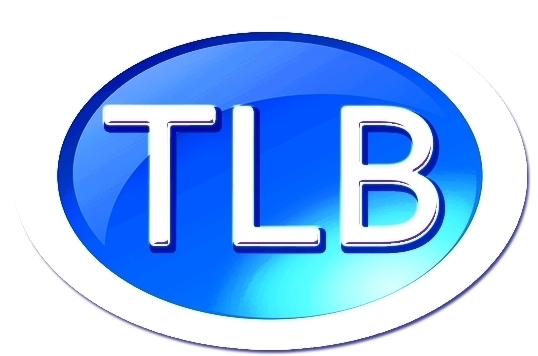Here Is the Cure for the 2019-nCor Coronavirus
February 10, 2020 in News by RBN Staff
Thanks to Johnny Delirious of The Master Survivor w/ Johnny Delirious, for the heads-up on this story and information.
Source: The National Health Federation
Vaccine-Induced Side Effects Due to Fill Hospitals In China
Instead of Coronavirus Infections
By Bill Sardi
While laboratories around the World are racing to develop a safe and effective vaccine against the mutated Coronavirus, now known as 2019-nCor, which is said to have killed hundreds, and with rumors Chinese health authorities are hiding more dead bodies underneath the floor boards of their newly constructed coronavirus hospitals, there is already a non-vaccine cure.
Convincing visual lab-dish evidence is shown below. (Because bots read these reports and censor them or bury them on obscure web pages when they refer to natural remedies, you need to click here for the identity of the cure. Otherwise an online search would have been unlikely to find this this report.)
CEPI: Part of the Problem or the Solution?
Certainly, don’t tell a New World Order organization called the Coalition for Epidemic Preparedness Innovations (CEPI) about this coronavirus cure. CEPI is handing out research grants to develop a vaccine. This is free money to pharmaceutical and biotech companies and actually the whole reason for the conjured-up epidemic, to develop a vaccine with public money.
CEPI is a private/public coalition headquartered in Norway with $760-billion of funding by various countries, including the Wellcome Trust and the Bill & Melinda Gates Foundation.
Recognize the billion-dollar reward a pharma/biotech company could gain from approval of such a vaccine. Why, it would make a pre-planned “killing” in the stock market, as three such companies have been awarded research grants by CEPI.
CEPI: Not Just a Funding Agency
CEPI is not just a funding agency. As a Science Magazine report says: “CEPI support began within hours after Chinese researchers first posted a sequence of 2019-nCor in a public database. That happened on Friday evening, 10 January, in Bethesda, Maryland, home of the U.S. National Institute of Allergy and Infectious Diseases (NIAID).”
CEPI researchers began to analyze the sequence of genes within the virus the next morning. The genetic makeup of the Wuhan 2019-nCor is said to be 80% similar to the SARS virus (Severe Acute Respiratory Syndrome, or SARS-CoV) that erupted in 2003 and that reportedly killed 774 worldwide.
Overkill by the World Health Organization
What has part of the World on lockdown is the news-media-generated fear of this rarely mortal, slow-to-spread virus. In an overkill by the World Health Organization, when air travelers return home from a trip to China they are placed in quarantine for two weeks.
The current fear being spread over the 2019-nCor viral epidemic appears to be a drill to test public health quarantine measures. As onerous as these quarantines are, it appears that these extreme measures have been no more effective in preventing deaths in 2019-2020 compared to the SARS epidemic of 2003.
As of February 8, 2020, 34,958 cases of coronavirus have been confirmed and 724 deaths worldwide (2% died). According to the Centers for Disease Control, the 2003 SARS outbreak reportedly infected 8,098 people and resulted in 774 deaths (9.6% died).
Rate of Infection Limits Effectiveness of any Future Vaccine
As of February 7, 2020, there were 24,953 cases in Wuhan and its environs, a city of 11 million. Presuming all cases of coronavirus in greater Wuhan have been reported to health authorities, the risk of infection would only be 6 in 100,000, a very remote risk. The risk of death is even more improbable. Yet, everyone will be expected to be inoculated once a vaccine is developed, approved and available.
In other words, if a vaccine were developed for this 2019-nCor coronavirus, 16,666 people would need to be vaccinated to prevent 1 case of coronavirus infection. So, off the top, given the high number of people needed to vaccinate to prevent just one single case of viral illness, vaccines would be categorically ineffective and costly.
If a vaccine were developed for this 2019-nCor coronavirus, 16,666 people would need to be vaccinated to prevent 1 case of coronavirus infection.
How Many Would Avert Coronavirus Infection versus Side Effects?
Let’s assume that all coronavirus infections have been reported to the health authorities in Wuhan, China.
Let’s assume the occurrence of severe side effects from any upcoming approved 2019-nCor coronavirus vaccine were the same as those from flu shots.
Let’s presume also that 15% of Wuhan’s population is over the age of 65 and the vaccination rate is 100%. That would amount to 1,650,000 vaccinated elderly individuals.
Let’s use for comparison a study of senior adults in the U.S. (a well-fed population) that received standard and high-dose inactivated trivalent (three strains) flu vaccine for comparison, where severe side effects were reported for 0.6% and 1.3% of vaccinated subjects, respectively.
Given that the infection rate in a population such as Wuhan is just 1 in 16,666 without vaccination in the population overall, and a higher anticipated rate of infection would be expected among senior adults, let’s say 30%, which would amount to 4,999 infected among every 16,666 elderly Wuhan residents. That would amount to 495,000 coronavirus infections among an estimated 1,650,000 elderly, unvaccinated residents of Wuhan.
Let’s presume that any newly approved coronavirus vaccine is only 50% effective at reducing coronavirus infections rates among elderly Wuhan residents based upon recent data for vaccine effectiveness studies for flu vaccine. So, maybe 247,500 cases would be prevented out of an estimated population of infected and uninfected population of 1,650,000.
If the current death rate from coronavirus of 2% among infected individuals is factored, then an estimated 4,950 lives out of 247,500 infected patients would be spared due to vaccination.
Using the data from a U.S. population of similar age (cited above), severe side effects would be expected to occur in 216-1,000 of every 16,666 vaccinated senior adults. Therefore, an estimated 21,384-99,000 out of 1,650,000 vaccinated senior adults in Wuhan would be expected to experience severe side effects from the vaccine leading to hospitalization. How many vaccine-related and treatment-related deaths would occur is unknown. Severe side effects and possibly vaccine/treatment-related deaths would vastly outnumber the number of lives saved via vaccination.
| CORONAVIRUS PROJECTED NUMBERS IN WUHAN, CHINA | |
| Coronavirus infection rate in Wuhan, China, current | 1 in 16,666 |
| Estimated population of elderly in Wuhan (15% of 11 million) – presume 100% are vaccinated |
1,650,000 |
| Coronavirus infected elderly in Wuhan (estimated) – 30% | 495,000 |
| Infections prevented, 50% effectiveness of coronavirus vaccine | 247,500 |
| Estimated lives saved due to vaccination: presume vaccine prevents all deaths among 247,500 elderly; 2% death rate | 4,950 |
| Predicted vaccine-induced severe side effects among elderly Wuhan residents (all are hospitalized) | 21,384-99,000 |
| Vaccine-related/treatment-related deaths
1/10th of 1% vaccine/treatment-induced deaths would = 1650 deaths |
?? |
Those widely publicized, instant-built hospitals in Wuhan for the coronavirus would largely be filled with patients suffering severe vaccine-related side effects, not the coronavirus infection itself.
My comparisons herein are more than fair to an imagined coronavirus vaccine because I am comparing vaccine effectiveness and side effect data from healthy, elderly U.S. populations versus actual data from the current coronavirus in a presumably less-healthy older population suffering from the coronavirus epidemic now underway in Wuhan, China.
Once mass vaccination would be forced upon the population in China, hospitals would fill with patients experiencing severe vaccine-induced side effects and would be easily confused with cases of severe coronavirus infection, leading to needless public panic, fear and needless death from treatment-related causes. Iatrogenic (treatment-induced) deaths would further worsen outcomes.
Serious side effects from flu vaccination include:
- Allergic reaction
- Anaphylaxis
- Anaphylactic shock
- Angioedema
- Arthritis
- Asthma
- Bell’s palsy
- Brachial plexus neuropathy
- Brain damage
- Cellulitis
- Coma
- Convulsions
- Cranial nerve paralysis
- Death
- Encephalopathy
- Encephalomyelitis
- Erythema multiforme
- Extensive limb swelling
- Febrile seizures
- Fever
- Flu-like illness
- Fainting
- Infection
- Guillain-Barré Syndrome
- Meningitis
- Microscopic polyangiitis
- Migraine headache
- Myelitis
- Nerve damage (neuropathy)
- Neuralgia
- Neurological disorders
- Numbness and tingling
- Optic neuritis
- Paresthesia
- Paralysis
- Partial facial paralysis
- Rash
- Respiratory distress
- Seizure
- Serum sickness
- SIRVA (Shoulder Injury Related to Vaccine Administration)
- Skin reactions
- Spinal cord inflammation
- Stevens-Johnson Syndrome
- Syncope and presyncope (fainting)
- Tachycardia
- Thrombocytopenia
- Tonic-clonic limb movements
- Transverse myelitis
- Upper respiratory tract infection
- Vasculitis with transient kidney involvement
- Vision problems
Note: It is difficult to locate a list of severe side effects caused by flu vaccination. There is online censoring of information about serious side effects of vaccines. An online search conducted for “severe side effects, flu vaccine” redirects and never leads to a source that lists severe side effects. Try this search for yourself.
CEPI: Focus on Immune Compromised Individuals
Given that a potential coronavirus vaccine would likely be only in a limited supply a CEPI representative says: “It appears at this point in time that older individuals, probably immune-compromised individuals, individuals with other medical conditions seem to be the ones who are affected the most by the severe disease… Each country needs to prioritize whatever vaccine becomes available for those who are identified as being at the highest risk.”
Finally, an admission that there are only a small number of people who are at high-risk to develop coronaviral infections and, by the way, they happen to be the least likely to successfully develop antibodies to any virus following vaccination.
Why would the elderly be most vulnerable to coronavirus?
Answer: Because they don’t develop adequate antibodies.
Inject Antibodies?
So, the moronic response is either to develop a vaccine that contains an attenuated version of the virus itself and hope and pray it works in an immune-compromised elderly adult population, or maybe even inject antibodies directly into at-risk individuals.
A report published in the Proceedings of the National Academy of Sciences notes the development of an antibody that binds to a coronavirus that would serve as prophylaxis against infection.
(Need coronavirus antibodies? You can purchase coronavirus antibodies online – $358 for a quarter of a milligram. But you just have to be a certified research lab to order.)
One plan is to develop antibodies that bind to viral proteins and, in doing so, stop the pathogen from readily infecting human cells. Some scientific excitement surrounds the development of compound CR3022, which is said to bind and combine with antibodies that attack coronaviruses.
But why the search for antibodies against coronavirus when your body already has an organ dedicated to making them – the thymus gland (located under your breast plate)?
Broad-spectrum antivirals needed
With potentially seven strains of coronavirus in play, researchers are searching for a broad-spectrum remedy. But RNA viruses like coronavirus have high mutation rates – up to a million times greater than their host cells. So, just how can a vaccine be made that specifically protects against a strain of coronavirus when the virus itself is mutating by mid-season?
Zinc-based Remedies Ignored
Of interest, in the search for a broad-spectrum coronavirus treatment, zinc-based drugs were explored as well.
That is no surprise, given that zinc deficiency is associated with increased susceptibility to infectious diseases caused by bacterial, viral, and fungal pathogens. The particular type of immune cells that are affected by zinc deficiency are T lymphocytes. The T stands for thymus gland. These glandular T-cells are reduced in number by zinc deficiency. A shortage of zinc also reduces the secretions (thymulin) from the thymus gland.
When viral particles enter the blood circulation they are confronted by so-called naïve T-cells that have not made any antibodies yet. These T-cells aren’t very active without zinc. In fact, the thymus gland itself shrinks from the size of a walnut in adulthood to that of a pea without adequate zinc. Adequate antibody responses are reliant upon zinc.
One report concedes that zinc supplementation could improve vaccination success rates. This is the primary reason why vaccines are ineffective, particularly among the very young (under age 2) and the very old (over age 65) who typically have low blood levels of zinc. High zinc-deficiency rates are reported in China (50-70% in children and 31% in adults).
Instead, toxic adjuvants like mercury and aluminum are inhumanely added to vaccines to provoke an antibody immune response. But zinc therapy is ignored by modern medicine.
OTHER FACTS YOU SHOULD KNOW ABOUT CORONA VIRUSES
- Including the newly mutated form of the virus, there is a total of seven coronaviruses that can infect humans, the CDC says.
- Corona viruses are not new. They were first identified as RNA viruses in 1970.
- While most of the early reports involving coronavirus were among animals, coronavirus antibodies were reported in humans as early as 1974. So, strains of corona virus didn’t just recently make a jump from animals to humans, as widely reported.
© 2020 Bill Sardi
Sharing is caring!
Share this:
- Click to email this to a friend (Opens in new window)
- Click to share on Facebook (Opens in new window)
- Click to share on Twitter (Opens in new window)
- More
- Click to share on WhatsApp (Opens in new window)
- Click to share on Tumblr (Opens in new window)
- Share on Skype (Opens in new window)
- Click to share on Pinterest (Opens in new window)
- Click to share on LinkedIn (Opens in new window)
- Click to share on Pocket (Opens in new window)
- Click to share on Reddit (Opens in new window)
- Click to share on Google+ (Opens in new window)
- Click to print (Opens in new window)
Related
Tags: China, coronavirus, Health













